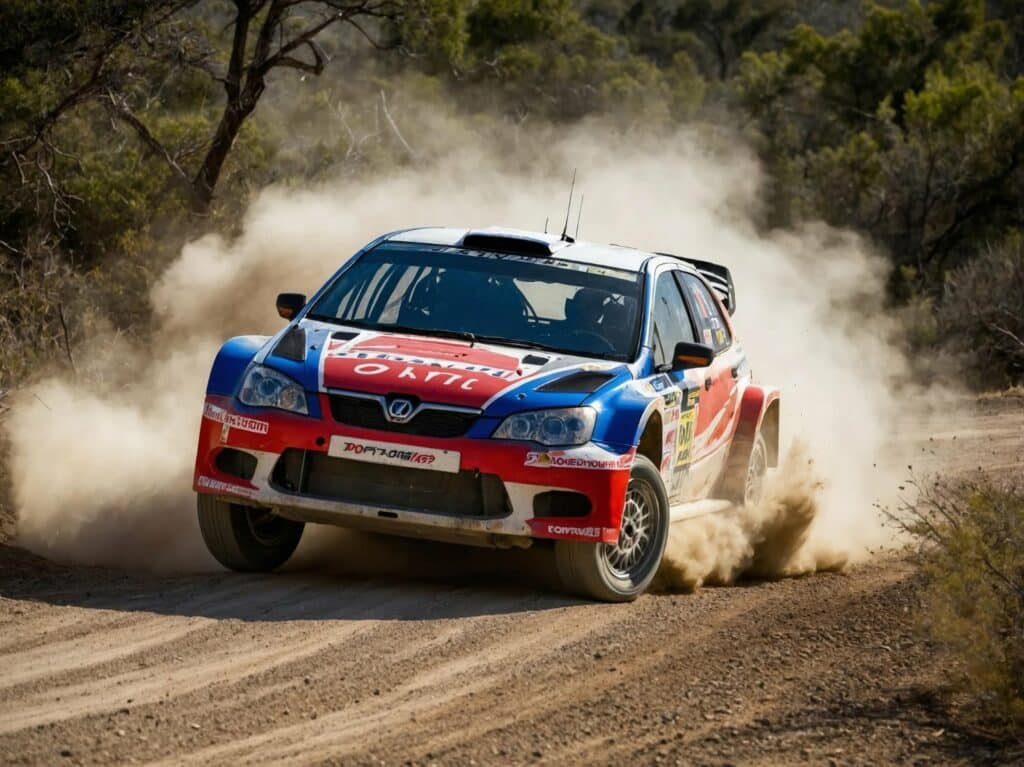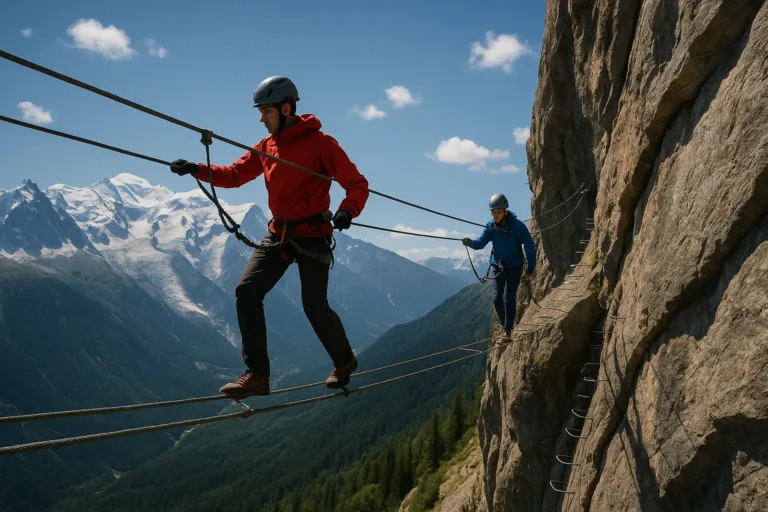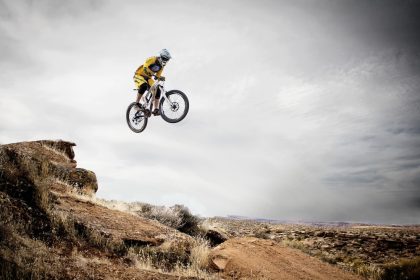For fans of speed, endurance, and adrenaline, rally sport is one of the most demanding and exciting disciplines in motorsport. At the very top sits the FIA World Rally Championship (WRC), where legendary drivers like Sébastien Loeb, Thierry Neuville, and rising star Kalle Rovanperä have built their reputations. This form of competition is not just about raw speed—it requires technical precision, strategic awareness, and incredible physical and mental resilience.
From the icy roads of the Monte Carlo Rally to the punishing desert stages of the Dakar Rally, rallying attracts thousands of enthusiasts worldwide. Every stage pushes the limits of both driver and co-driver, demanding absolute trust and perfect coordination. Behind the wheel of cars like the Ford Puma, Hyundai i20 N, or Toyota GR Yaris, today’s competitors showcase both advanced engineering and sheer determination.
If your ambition is to follow in the footsteps of champions like Sébastien Ogier—who made history with Citroën Racing before becoming a leading driver for Toyota—then learning the basics is the first step. In this article, we’ll guide you through the essentials of rally sport: from understanding the structure of events and preparing your car, to joining your first competition. Who knows—one day you could be chasing that elusive manufacturers’ championship title yourself.
Understanding the Fundamentals of Rally Sport
Rules and Race Formats
Before taking part in rally sport, it’s crucial to understand how the discipline is structured. A rally is usually made up of several stages that all converge on a central service area. These stages are divided into two main types:
- Special stages: closed-road sections where drivers and co-drivers are timed to the second. Performances here are decisive for the overall rally standings. Cars leave the start line at set intervals, often one or two minutes apart, ensuring maximum focus on speed, control, and navigation.
- Liaison stages: normal roads used to connect each special stage. While not timed competitively, they test the driver’s ability to keep the car reliable and road-legal between demanding runs.
Special stages are the heart of every rally, and they determine the winner of the event. The format varies: some rallies, such as the Rally of Portugal or Rally Japan, form part of the FIA World Rally Championship (WRC) and count towards both driver and manufacturers’ championships. Others take place at a national or regional level in the UK and Europe, offering training grounds, demonstrations, or test events where competitors refine their skills throughout the rallying season.
Whether you dream of entering an official competition, joining a local rally club, or simply enjoying motorsport events as a fan, knowing the rules and race formats is the first step towards appreciating the complexity and thrill of rallying.
Essential Equipment: Cars and Safety
Safety is at the core of rally sport. Before any event begins, every rally car must undergo strict technical checks to ensure compliance with the regulations, and the vehicle must remain within those standards throughout the competition. These inspections guarantee that both drivers and co-drivers can compete safely on every stage.
Competitors are required to use FIA-homologated safety gear, which includes flame-resistant suits, helmets, gloves, and specialist boots. These items are not just recommendations—they are mandatory to protect participants in the event of a crash or fire.
Cars must also meet the highest safety standards. This means being fitted with five-point harnesses, FIA-approved fire extinguishers, and, in some cases, fire-retention systems (RFT). Vehicles are also subject to noise regulations, with most rallies requiring that cars do not exceed 100 dB at 75% of maximum engine revs, except at certain international FIA competitions.
From grassroots rallies in the UK to World Rally Championship events, adhering to these equipment standards is vital. They not only ensure fairness across competitors but also safeguard the long-term future of the sport of rallying.
Training and Getting Your Rally Licence
Choosing a Rally Driving School
To become a rally driver, the first step is to train with a specialist rally driving school. Across Europe and the UK, several centres offer professional programmes that combine both theory and practice. Renowned institutions, such as Sébastien Loeb Racing in France, provide courses aligned with FIA standards and adapted to the evolving demands of the sport.
Other schools, like the Circuit de Chenevières, managed by former French Rally Champions Patrick Henry and Magali Lombard, offer training on multiple surfaces, from tarmac to gravel. These courses are designed to help drivers master car control, braking, cornering techniques, and co-driver communication—skills essential for real rally competition.
Taking Exams for a Rally Licence
Obtaining a rally licence is mandatory to compete in official events. This involves passing both theoretical and practical exams. For example, in Belgium, the Royal Automobile Club of Belgium (RACB) requires candidates to complete a written test as well as a practical driving assessment on different surfaces.
The theory exam usually covers rally rules, safety, and regulations. The practical exam assesses advanced driving skills, including trajectory choices, braking points, cornering, and vehicle handling in challenging conditions. In France and the UK, candidates must also provide a medical certificate and proof of first aid training. Programmes typically last from 7 to 12 months, blending classroom sessions with on-track practice, after which drivers can apply for licences such as Rally R Junior or Rally R Stage, depending on their ambitions.
Preparing for Your First Rally Event
Choosing and Preparing Your Rally Car
Competing in your first rally requires careful planning and the right rally car setup. It’s vital to select a vehicle that meets the championship regulations while being adapted to the terrain of the event. Preparations often include strengthening the suspension, installing a roll cage, fitting underbody protection plates, and improving braking and cooling systems.
Tyres are also decisive. For tarmac rallies, drivers use slick or semi-slick tyres, while gravel or muddy stages require reinforced patterns for maximum grip. Each modification improves both performance and safety—two pillars of successful rallying.
Registering for a Local Competition
For newcomers, the best starting point is a local or regional rally event. Winning straight away is unlikely, but the experience is invaluable. Under the guidance of experienced drivers and instructors, you’ll learn how to translate training videos, theory, and practice runs into real competition performance.
A key preparation step is working with your co-driver on the road book. This essential guide includes pace notes, stage layouts, and timing. The co-driver’s role is to announce corners, manage timing, and maintain focus throughout the rally. A well-prepared road book can make the difference between a clean run and costly mistakes.
Rallying, Safety, and Insurance
In rally sport, most drivers think about insuring their car, but protecting yourself is just as important. A serious crash during a special stage can lead to severe injuries. This is where personal accident insurance becomes essential. It covers medical costs, hospitalisation, rehabilitation, and disability compensation, ensuring that both driver and co-driver are fully supported.
Before entering any competition, consider taking out dedicated rally insurance. This allows you to focus on the race with peace of mind, knowing you are protected against the risks inherent in this demanding sport.
Ready to Join the World of Rally Sport?
Starting in rally requires complete preparation: professional training, obtaining a licence, selecting and modifying your car, and entering your first race. Success depends on mastering the fundamentals, from engine setup to pace notes, and from safety gear to race strategy.
With passion and determination, you can follow in the footsteps of rally legends such as Sébastien Loeb, Sébastien Ogier, or Xavier de Soultrait. Rally sport opens the door to an extraordinary community of drivers, co-drivers, and motorsport fans. With the right mindset—and the right protection—you can make your mark on this incredible discipline. That’s where Assure Ton Sport comes in, providing specialist rally insurance that keeps both drivers and co-drivers safe, so you can focus on the race ahead.






